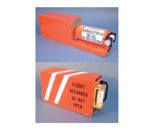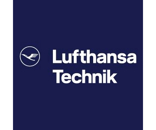

FOKKER F28 AIRFRAME SYSTEMS (ATA 20-50) MODIFICATIONS (58)
LED Sealed Beam Replacement Lamps for Part 25 aircraft


LED Sealed Beam Replacement Lamps from Talon
Get Light-Years ahead of your competition!
Talon Aerospace sealed beam replacement lamps are designed to allow for plug and play replacement of the existing sealed beam lamps fitted on an aircraft. Talon has 3 sizes available, with replacements for the Par 64 landing, Par 46 taxi and Par 36 logo, runway turn-off, engine and wing scan applications. The existing sealed beam lamps have a design life span between 25 and 300 hours while the Talon LED replacements are designed for 20,000 in service hours.
Light output is comparable to OEM lamps and the Par 64 landing light and Par 46 taxi light are designed to meet Mil Spec standard MIL-L-6503H. The LED replacements work with the existing transformers on the aircraft and are designed to minimize the overall LRU count within an operator inventory. The LED replacement lamps are designed with cool white LEDs to maximize light output but the Par 36 logo is also made available in warm white. Par 36 LED replacement lamps operate on both 13V and 26V AC, while the Par 46 and 64 operate on 26 VAC. All lamps can also operate on 28VDC, allowing for rotorcraft applications.
Talon LED sealed beam are designed at comparable weight to existing sealed beam lamps of equal size, allowing them to be used in existing fixtures. The current draw for the LED lamp is significantly lower compared to the existing units. Landing light Q4559X draws 650W while Talon LED replacement TAE0728-1 draws only 104W.
The LED replacement lamps are fully repairable and operator can replace individual components like the LED board, power supply and lens in case of failures, reducing cost of ownership.
Talon and Proponent
Proponent is the exclusive global distributor of all Talon Aerospace products. This relation provides customers with the latest generation of LED lights.
Proponent
Proponent is the new identity representing Kapco Global and Avio-Diepen as one united company, and the unique capabilities that the new organization brings to the aerospace market. With extensive experience in supporting the MRO, OEM and airline markets, our organization offers innovative inventory and supply chain management solutions to OEM and aftermarket customers.
Solid-State Recorders (SSCVR and SSFDR) and ULB/RIPS



Enhanced Flight Data Recorder /Cockpit Voice Recorder Systems for Improved Compliance and Reliability
Several aviation authorities have mandated—or are in the process of mandating—the use of Solid-State Recorders and Underwater Locator Beacons (ULBs) with increased performance requirements.
Key regulatory milestones include:
-
By 2018: All flight recorder-mounted ULBs must have a minimum 90-day transmission duration.
-
By 2019: All flight recorders are expected to be solid-state types with a minimum recording duration of 120 minutes.
-
Post-ED112 requirements: Flight recorders must be capable of storing 20 to 25 hours of data.
In response to both regulatory changes and operational needs, Fokker Services introduces a new generation of Solid-State Flight Data Recorders (FDRs), Cockpit Voice Recorders (CVRs), and ULBs for integration across your fleet. These units offer significant advantages over traditional tape-based systems, including:
-
Improved technical dispatch reliability
-
Reduced maintenance costs
-
Increased system performance and recording integrity
To further enhance survivability and regulatory compliance, Recorder Independent Power Supply (RIPS) units can also be offered, either as add-on modules or integrated solutions.
Installation of the CAS-81 TCAS II system and dual TRA-67...

Installation of the CAS-81 TCAS II system and dual TRA-67 Mode S transponders.
Installation of Universal flight data recorder.

Installation of Universal flight data recorder.
Installation of non-electrical Floor Path Marking System

Installation of non-electrical Floor Path Marking System
Installation of standard windshear systems.

Installation of standard windshear systems.
Modification of a Collins TVI-920/TVI-920D Vertical Speed/TCAS Indicator installation
Modification of a Collins TVI-920/TVI-920D Vertical Speed/TCAS Indicator installation
Modification of Collins 618M-4 VHF COMM Receiver Transmitter Installation to...
Modification of Collins 618M-4 VHF COMM Receiver Transmitter Installation to a 618M-5 VHF COMM Receiver Transmitter installation with either a Gables G7406-02 or Avtech 7522-1-2 VHF COMM Receiver Transmitter Control Series using with Collins Installation Instructions as listed on AML No. ST00525WI-D, or later FAA approved revisions.
Change in cabin seats and cabin seat layout from a...
Change in cabin seats and cabin seat layout from a 62-tourist class seating configuration to a 65-tourist class seating configuration.
All coach passenger seating and interior accomodations layout/ installation (69Y,...
All coach passenger seating and interior accomodations layout/ installation (69Y, 70Y, and 72Y options).


